Community colleges struggle to fund buildings for growing workforce programs
Northeast Mississippi Community College was running out of space, so after years of saving, it bought an empty furniture warehouse five minutes outside this small town.
The plan is to fill the 350,000 square feet with the college’s growing career-technical education programs, setting up everything from classrooms, labs and offices to conference space that could support economic development in the five rural counties that comprise the northeastern-most state lines of Mississippi.
“I can see it in my mind,” said Chris Murphy, the college’s vice president of finance, standing in the mostly empty warehouse on a recent Thursday.
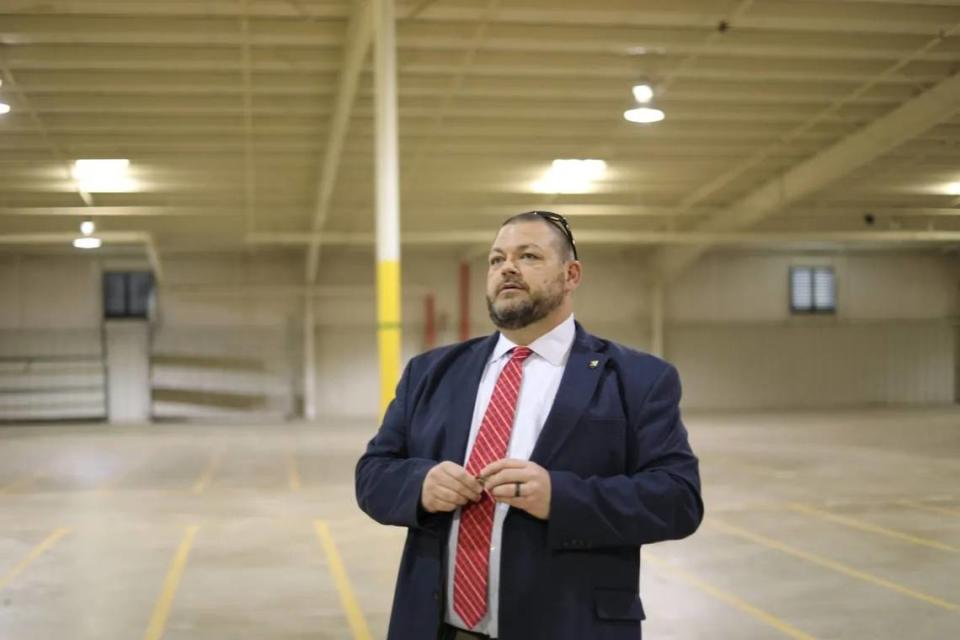
Two years later, the warehouse is still mostly empty. In the cavernous space, there are ant hills next to cardboard boxes belonging to a tenant whose business helped the college pay off the building’s roughly $3 million note (the total cost was about $7 million). Outside, weeds poke through the cracked pavement.
Without help affording at least half of the estimated $15 million in renovations, the warehouse will stay that way, Murphy said.
Until then, the community college and its students will make do with the current career-technical facilities, housed in decades-old brick buildings on the main campus, where conditions are moldy, grimy, cluttered and water-damaged.
Though $15 million may not sound like much, it’s a big ask for the state’s historically neglected community college system. And NEMCC isn’t alone: Many community colleges across the state are struggling with unmet needs, especially on the infrastructure side, even though lawmakers have drawn from the state’s excess revenue to provide what may be more funding than ever before.
Not every college has benefited equally. Though all 15 schools have received routine funds for new buildings, repairs or renovations, some colleges have gotten additional appropriations for line-item projects while others, including NEMCC, have not.
Lawmakers acknowledged this disparity earlier this year and said they are working to fix it.
“I want to make sure that I keep the big boys happy, and they get their fair share, but just, also … we’ve got to do something for the smaller community colleges to keep them afloat,” said Rep. Donnie Scoggin, R-Ellisville, chair of the House Colleges and Universities Committee during an appropriations hearing earlier this year.
But it may not be enough to correct for years of paltry funding. Mississippi has historically used bonds to fund capital projects for state entities. In 2021, the most recent year lawmakers gave out bonds, the entire 15-college system received $35 million, according to the Mississippi Community College Board.
That’s about the highest amount ever received in bonds by the community college system. And yet, the eight universities got more than $86 million in bonds that year, despite educating fewer students than the community colleges.
For colleges tasked with shepherding the state’s ambitious workforce development programs, the meager funding means they’re educating students in facilities that are falling behind the conditions of private industry.
“The idea that working in a factory is dark, dangerous, dingy is not true,” said Greg James, NEMCC’s director of workforce systems. Students “need to see the environment they’re gonna be working in.”
“I don’t think I need new equipment anytime soon,” he added. “I need buildings to put it in.”
On the third floor of the William L. Waller Technical Center, in the culinary arts classroom, grease stains the ceiling tiles.
Dead ladybugs line the windows, which aren’t insulated. A wide refrigerator is broken; another fridge can’t get cold enough. A sink in the back galley is out of commission, the pipes rusting and broken. One time in recent years, water leaked through the floor onto computers in the office below.
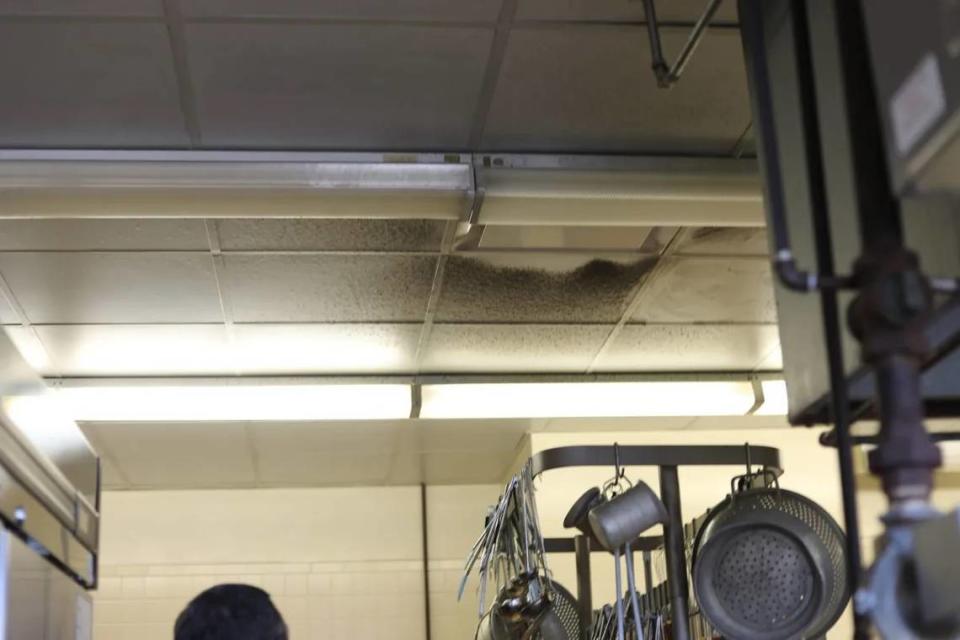
Other career-tech classes are in brick buildings with flat roofs prone to leaking. In a classroom with dead cockroaches and chalkboards, air-compressor equipment is squished together in rows that don’t resemble a factory. In an industrial lab, a basin sink is covered in grime, and the door to the nearby tool room is metal.
“That looks like a prison to me,” said Nadara Cole, NEMCC’s vice president for workforce training and economic development. But, she joked, at least the leather-and-chrome chairs the college can’t afford to replace are back in style.
Cole is getting ready to retire. She’s worked at NEMCC since the early 1990s, and in that time, the college has been unable to build any new career-tech facilities. The existing buildings, which she said were all constructed during an older push for vocational programs in the 1960s, are almost as old as she is.
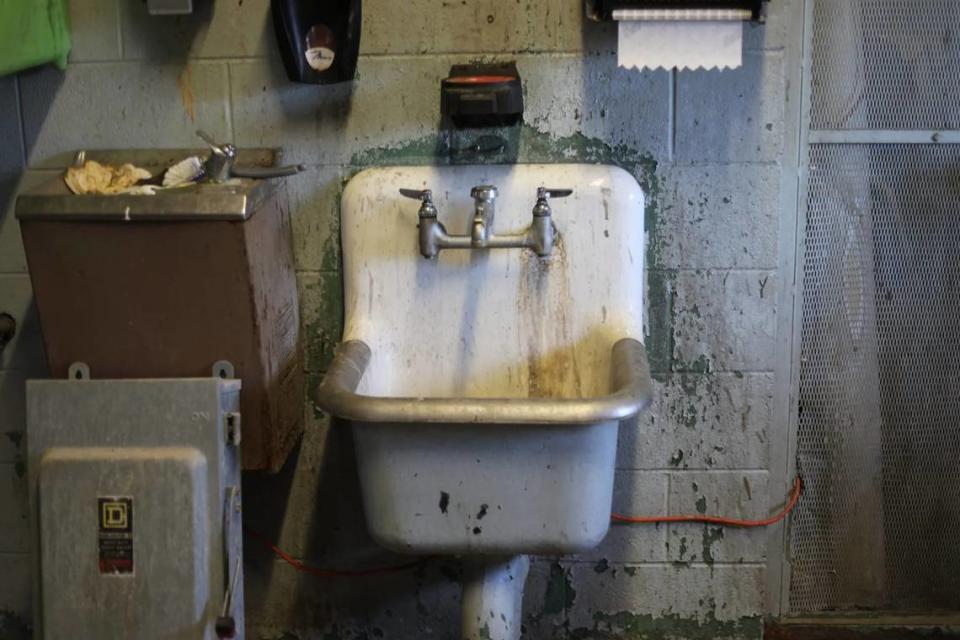
All the community colleges struggle with funding. With roughly 90,000 students, the community colleges educate more students than Mississippi’s public universities, but they are expected to do so with lower tuition and less state appropriations.
This imbalance, Cole and others say, is directly reflected in the way the community colleges look which, in turn, affects recruitment. Students who tour NEMCC sometimes come from high schools that are in better shape, she said.
“It’s subliminally telling them, ‘you’re the stepchildren,’” Cole said.
“That is the image we sometimes feel we are projecting because we don’t look as nice,” she added.
The 15 community colleges received $396 million in operational support and capital funding last year, compared to the more than $1.1 billion appropriation for the eight universities, a figure that doesn’t include state financial aid.
It’s not a recent phenomenon: From 1989 to 2021, the community colleges have received one-third the bond funds the universities have, according to figures compiled by MCCB. This means capital projects at the colleges move slower, because they must wait years to accumulate enough bonds, all while the cost of construction increases with inflation.
Kell Smith, the MCCB director, said he doesn’t know why lawmakers don’t appropriate an equitable amount of bonds to the colleges, except possibly because state laws require counties within a community college district to provide additional tax revenue for the “enlargement, improvement and repair” of the campuses.
“I hate to say that’s the way it’s always been,” Smith said.
For rural colleges like NEMCC that don’t have the tax base of a Tupelo or DeSoto County, this means they don’t have significant funding alternatives when state appropriations are low. NEMCC is located in Prentiss County, where nearly 17% of its population of less than 25,000 lives below the poverty line.
NEMCC gets about $4 million a year from millage from its five counties, Murphy said.
The formula that lawmakers use for routine appropriations for repairs and renovations also poses another funding ceiling for rural colleges. Last year, lawmakers appropriated $50 million such funds based on a formula that is one-half evenly split among the colleges and one-half full-time equivalent enrollment, meaning colleges got more money if they had more students.
With about 2,500 students, NEMCC isn’t the smallest colleges in Mississippi, but it can’t compete with ones that draw enrollment from the state’s metro areas.
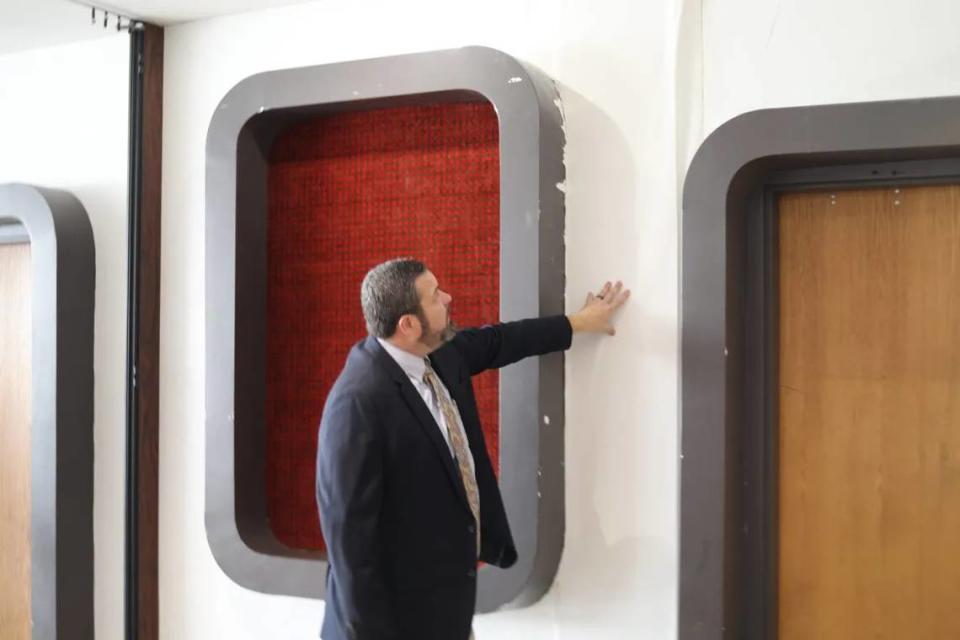
Jason Mattox, the associate vice president for career and technical education, said NEMCC receives federal funds for career-tech programs, but the amount is too small to address all the equipment issues in any given year. The money is also shared with the college’s health science programs.
Without newer facilities, the stigma associated with career-tech education will continue to kneecap the programs, Mattox said.
“It’s dirty, it’s greasy, it’s what we call the ol’ vo-techs,” Mattox said. “In reality, we’re not that way at all. We’re training students for highly technical, high-demand jobs, and we need facilities that replicate what students should see when they get out into the working industry.”
The difference is noticeable, said Cole Thacker, a 24-year-old culinary arts triple major who worked in restaurants before enrolling at NEMCC.
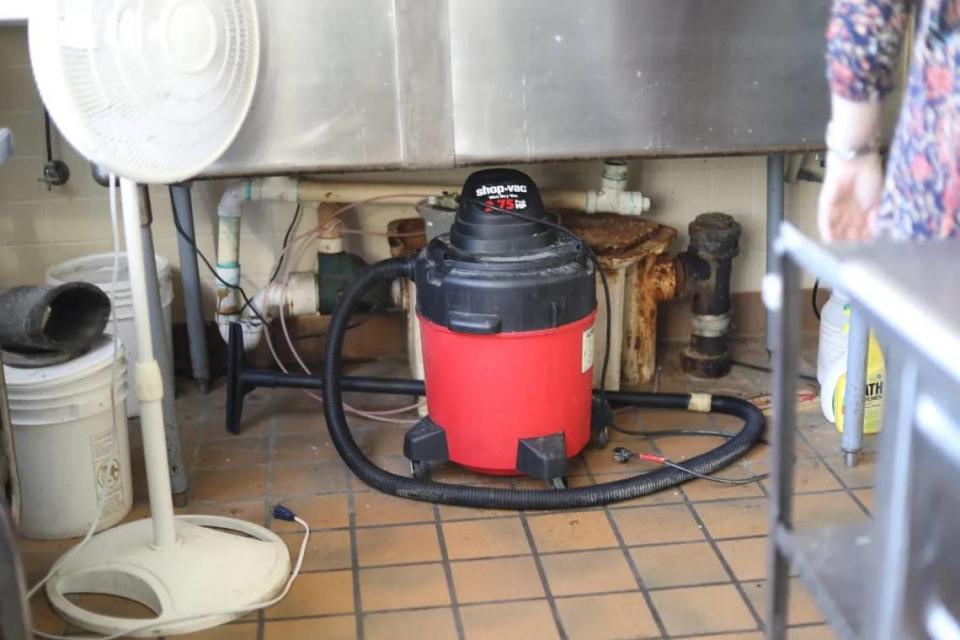
The kitchen is so small, he’s burned himself trying to prevent hot pans from touching other students. Because there are not enough stand mixers, he’s had to wait for his turn hours after class to finish assignments. The fridges have ruined his classmates’ projects, making it harder to learn advanced techniques like mirror glazing.
Thacker views this program as an investment in his future; he hopes to work at Disney World after he graduates in 2026. Going directly into the restaurant industry could only take him so far, he said.
“I tried to climb my way up, and I found out you can only climb so high without knowing … fundamental stuff that usually isn’t discussed in the professional environment,” he said.
What’s new stands out even more in NEMCC’s outdated precision manufacturing and machining technology lab.
Toward the back of the shop are gray-and-white automated machines. They’re brand new — not to mention expensive, costing a total of $816,000. They can be used to cut material into a range of shapes to be used in the manufacturing process for anything from car parts to surgical implants. This skill set is so desirable that NEMCC’s programs have helped attract major defense contractors and international companies like Toyota to the area.
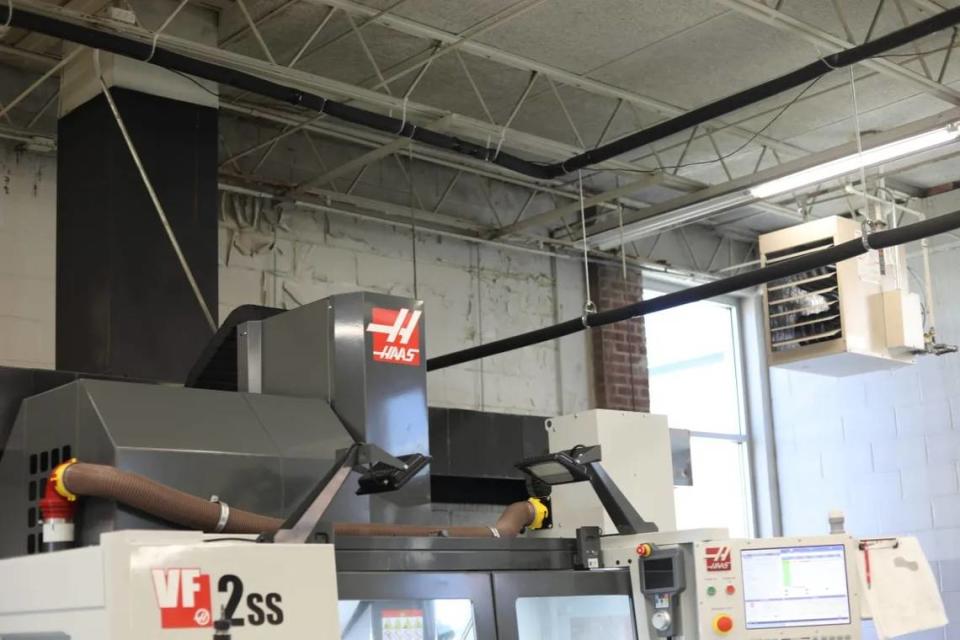
“The sky’s the limit,” said Jonathan Shaw, an instructor in the program.
It’s also something Shaw thinks about more than he should have to. When it rains, the ceiling leaks. The location of the five machines, Shaw said, was strategic. Still, the machines are just a few feet from a wall that he said contains a “splashing risk.”
The morning a Mississippi Today reporter visited the lab, Shaw had to vacuum up water that pooled on the floor. It’s what he signed up for when he decided to become a teacher, taking a $40,000 pay cut because he wanted to pass on the skills he’d learned to others.

Jonathan Shaw, a precision manufacturing instructor, shows photos he’s taken of water pooling on the lab floor on March 28, 2024.
When it comes to requesting state funds for capital improvements, the community colleges are often on their own, according to interviews with state and local college officials. Unlike the state’s public universities, which are under the umbrella of the Institutions of Higher Learning, the community colleges operate more autonomously, with individual governing boards. MCCB supports the college’s requests but isn’t involved in crafting them.
Mississippi’s workforce development office, called Accelerate MS, is a source of funding for programs and equipment — they helped NEMCC get the new machines. While brick-and-mortar projects aren’t Accelerate’s main focus, the office has acted as a pass-through for construction projects that lawmakers funded with federal pandemic money, said Courtney Taylor, its new director.
Last year, those funds went to community colleges, Taylor said, and the year before that, $20 million went to the private William Carey University for a new primary care institute.
“Building buildings is very different than building people,” she said.
Smith said he doesn’t know the scope of deferred maintenance at the colleges, and that the Department of Finance and Administration Bureau of Buildings would have that information. The colleges do provide a 5-year capital plan to MCCB, Smith added, that shows $131 million in repair-and-renovation needs for the upcoming fiscal year.
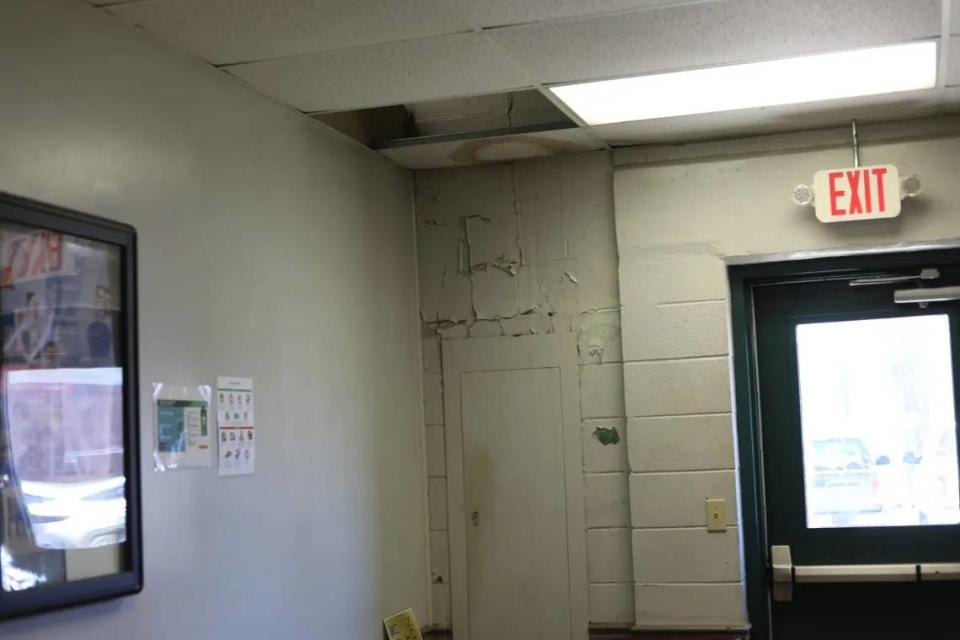
What can end up happening is the colleges, like other public entities, receive funds based on how powerful their local delegation is.
“Our legislators, they do what they say, but we’re one little corner of the whole state,” Cole said.
At the same time, Cole said she isn’t blaming lawmakers for NEMCC’s needs.
“There’s just not enough funds to do everything we need to do,” she said. “We’re a poor state. I get it. We can’t depend on just the state, although that is where a lot of it is going to come from.”
That mentality also leads state agencies like MCCB to craft budget requests based on what they believe lawmakers will fund. According to a 2007 law, community colleges are supposed to receive “mid-level funding,” an amount in-between the budgets of K-12 and IHL. But lawmakers have never done that, so MCCB stopped asking for it on behalf of the colleges.
“What the statute required us to request was such a high amount that we knew this is not reasonable, this is something we can expect to get,” Smith said.
There’s also a lack of transparency in how funding decisions are made. Though Smith regularly talks with “budget writers” — lawmakers on the appropriations committees — he couldn’t tell Mississippi Today how they decide what to fund other than the state has finite resources.
And two college presidents whose schools have not received as much state support as others declined to talk with Mississippi Today for this story. The presidents of Copiah-Lincoln Community College and East Central Community College said they did not have time for an interview.
At Mississippi Delta Community College, the law enforcement training academy is struggling with mold and a roof that’s falling in, lawmakers learned during the House appropriations committee earlier this year. Tyrone Jackson, the president, said he wouldn’t talk with Mississippi Today for this article because the colleges advocate with one voice during the session.
But the colleges don’t receive state funding as one.
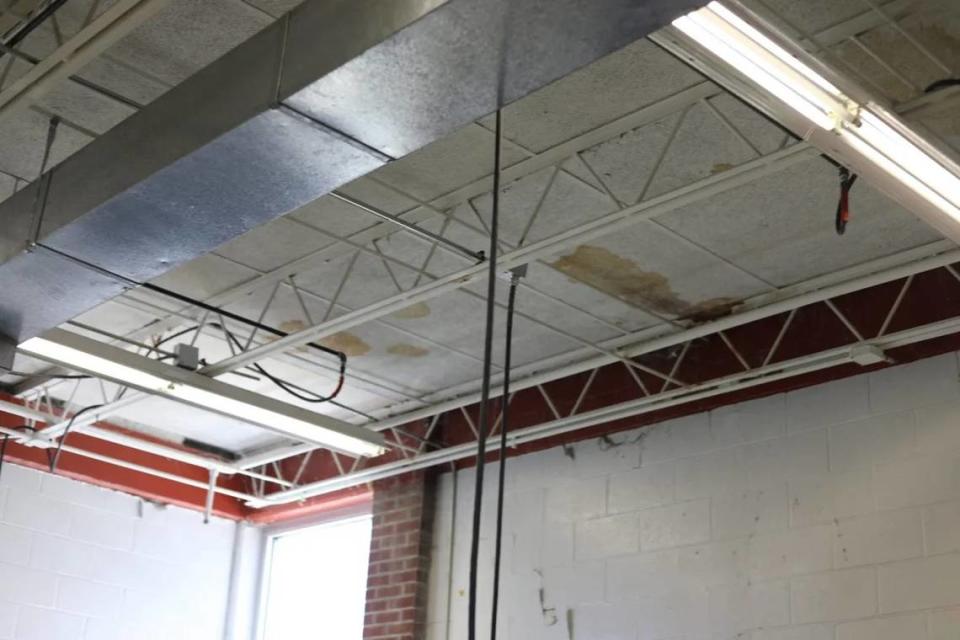
In NEMCC’s industrial maintenance classroom, instructor Brian Warren demonstrated how to cut dice while trying not to sweat. The air compressor in the decades-old building’s AC blew out that morning.
What really gets to Warren — who, like Shaw, took a roughly $40,000 pay cut for this job — is the lack of space.
One day, he hopes he will finally have a shop large enough to teach students how to work with a manufacturing robot, donated by a nearby Toyota supplier, that has been sitting wrapped in plastic for four years because he doesn’t have enough space to safely use it.
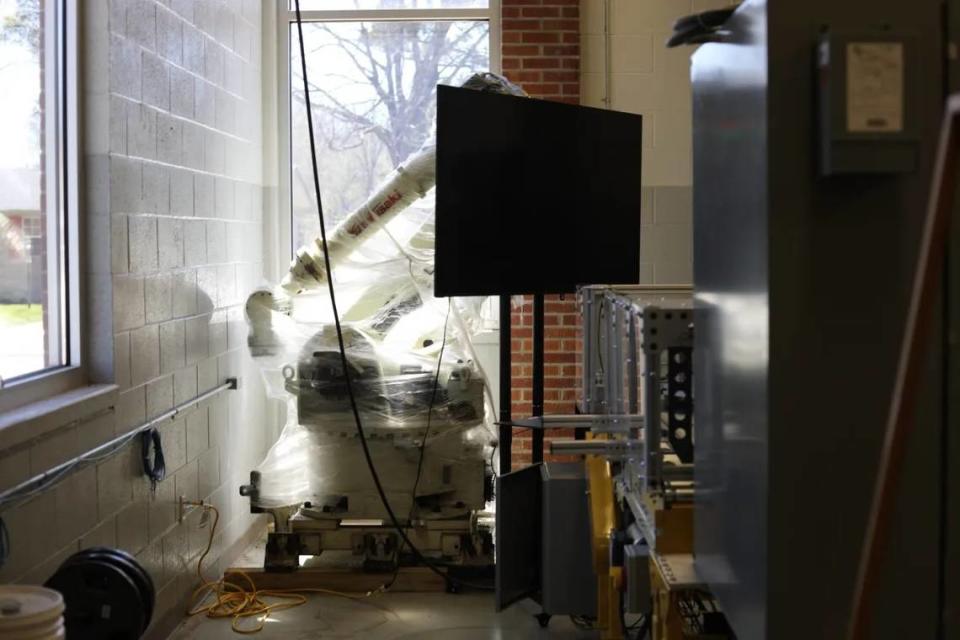
Local business and economic development leaders who make up NEMCC’s workforce council met in a classroom last week, sitting in classroom desks next to mannequins prone on stretchers. An arcade-game-like simulator to teach truck driving sat in the corner.
James, the workforce systems director, asked the council for feedback on what NEMCC could be doing to help local employers find qualified workers. If NEMCC can secure funding, the council would likely meet in the renovated furniture warehouse, in a grander space befitting the group’s ambitions.
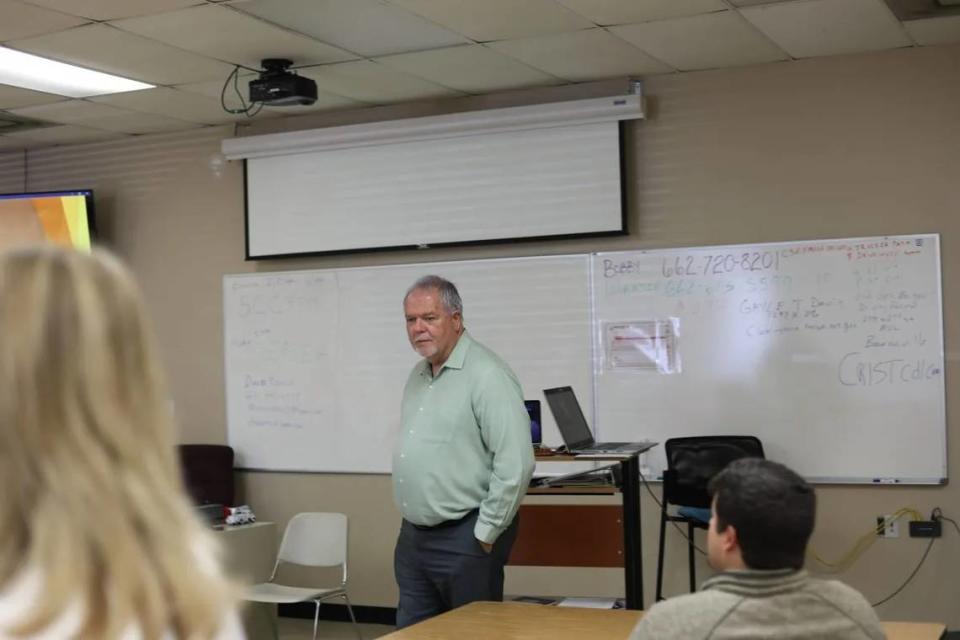
“Are we working on something you think is a waste of time?” James asked the group.
One person suggested NEMCC should offer a lineman class. Several people said they wanted to see NEMCC teach common sense skills, from a work ethic to how to read a clock and use a tape measure. Leon Hays, the executive director of the Prentiss County Development Association, added that “getting a diploma doesn’t give you life skills.”
Rusty Berryhill, the president of a furniture company in Union County and a past chairman of the Mississippi Manufacturers Association, said NEMCC should consider creating a distribution list for employers of recent graduates, an idea that generated a lot of interest.
Then Forrest Bryan, an ecosystem coordinator from Accelerate MS, invited members of the council to a roundtable discussion with industry, not lawmakers or nonprofits, about funding opportunities.
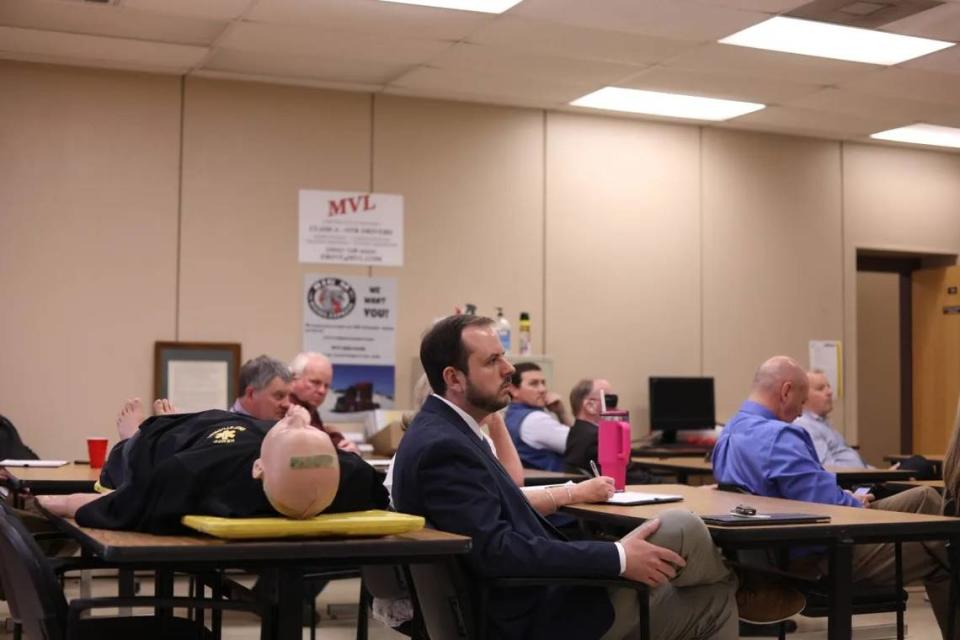
“If we’re not listening to industry, we’re not listening to the people who really matter, okay?” Bryan said. “Politicians really don’t matter. I mean, obviously they matter, but they have their place over there. So the industry leaders and the industry needs are what we are wanting to address at this particular discussion.”
“Somebody should shout, ‘Amen!’” Taylor, NEMCC’s finance person, said, tapping Mattox on the shoulder.
The council’s next stop after the meeting was to tour a brand new robotics lab the college did up itself with painted floors and new lighting.
Before checking out the new classroom, Berryhill paid NEMCC a compliment, saying the college was working hard to be beneficial to local industry. He recently hired one NEMCC graduate at his small company, where he employs less than 125 people, and is employing another NEMCC student part-time.
But are lawmakers appropriating enough to help the college sustain its programs?
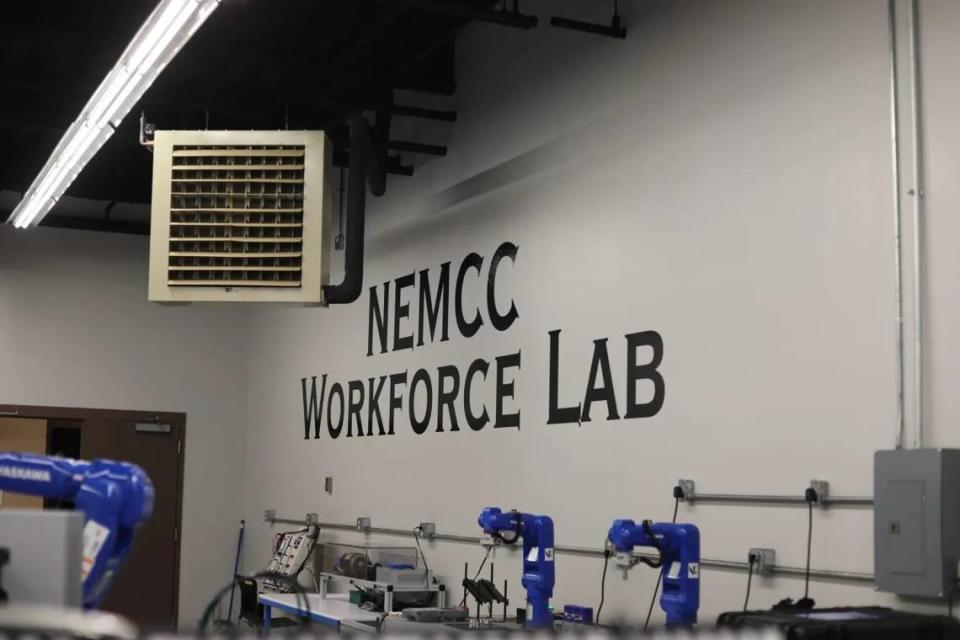
The workforce council toured a classroom that NEMCC recently transformed with paint and new lights on March 28, 2024.
“I’m not answering that,” Berryhill responded. He later said he felt like it wasn’t his place to comment on funding matters, because he doesn’t want lawmakers to feel criticized for appropriating too little or make them think they are giving too much, adding “it’s a no-win situation on my part to answer that question.”
Murphy said he thinks lawmakers support Mississippi’s community colleges — they just need to know how. By purchasing the furniture warehouse, NEMCC made a commitment to help citizens in its five-county region, an area where the free-trade agreements of the 1990s led the economy to suffer.
“We need the Legislature behind us,” Murphy said. “I think they are, especially on the workforce equipment and program side. But we need help on the capital side as well.”

 Yahoo Finance
Yahoo Finance 